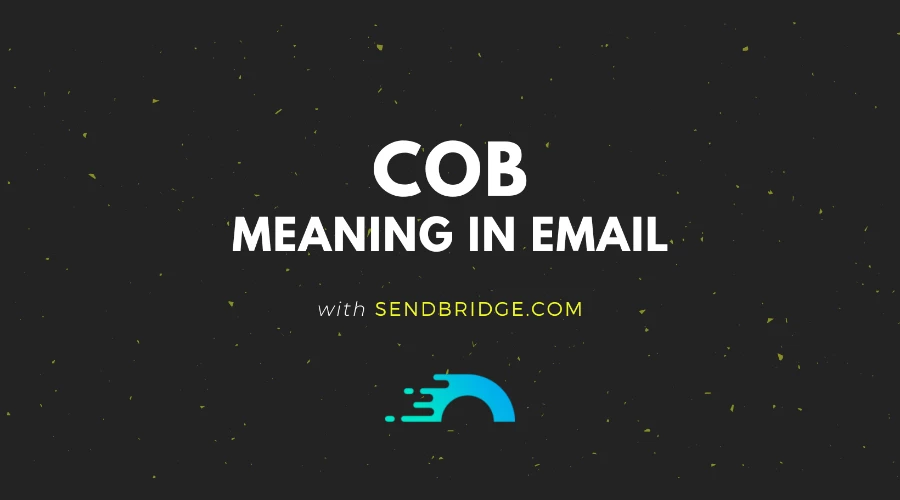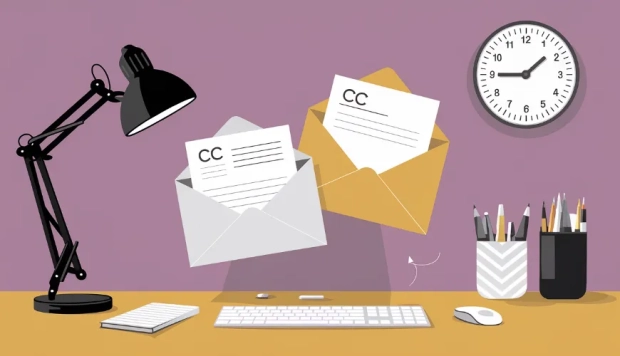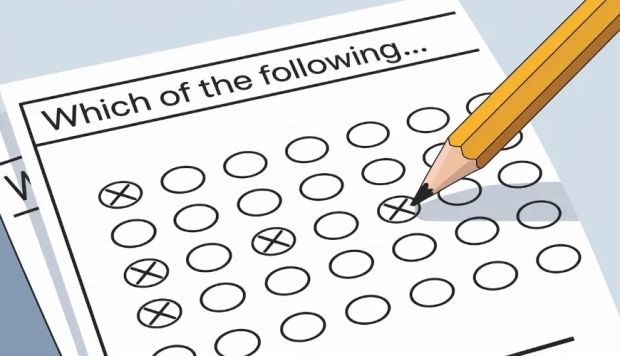COB Meaning in Email

What is COB in Email
In the world of emails, especially in a business setting, you might come across the COB acronym. But what does it really mean? COB stands for "Close of Business." This term is used to indicate the end of the business day. It's a way to set deadlines or expect responses by the time business officially wraps up for the day.
For example, if your boss sends you an email saying, "Please submit the report by COB," they expect you to finish and send the report by the end of the workday. The tricky part is that the exact time can vary depending on the company or even the country. In some places, COB might be 5 PM, while in others, it could be 6 PM.
Difference Between COB and EOD
Now, you might wonder how COB acronym is different from EOD, another term that pops up in business emails. EOD stands for "End of Day." While it sounds similar to COB, there's a slight difference. EOD is more flexible and can sometimes refer to the very end of the day, midnight, rather than just the close of the business hours. This makes COB a more specific term within the context of work.
When using COB in business emails, it's important to be clear and precise. Not everyone might understand the term, especially in international settings where work hours can differ greatly. It's always a good idea to specify the exact time you mean by COB to avoid confusion. For instance, saying "Please complete this by COB (5 PM EST)" can make your request much clearer.
Tips for using COB acronym effectively
Know Your Audience: When communicating with individuals who are in different time zones or have varying work schedules, it is essential to adjust your Close of Business (COB) time to suit their circumstances. Being aware of your audience's specific needs and schedules ensures that deadlines are realistic and achievable. This consideration helps in fostering clear and effective communication, minimizing the chances of missed deadlines due to time zone discrepancies.
Be Specific: It is crucial to explicitly state what you mean by COB to avoid any misunderstandings. This is particularly important in situations where there are tight deadlines. By clearly defining the exact time you consider to be COB, you ensure that everyone involved has a mutual understanding of when tasks or responses are due. This specificity is especially important in written communications like emails, where assumptions about timing can lead to significant delays.
Use It Sparingly: The term COB should be reserved for situations where the timing is critical. Overusing COB for routine tasks can diminish its perceived importance and urgency. By using it judiciously, you maintain its impact and ensure that when COB is mentioned, it is taken seriously. This selective use helps in maintaining the urgency and significance associated with deadlines.
Combine with Dates: Sometimes, simply stating COB is insufficient, especially for tasks that might extend into the next day. To avoid any ambiguity, it is beneficial to pair COB with a specific date. For example, saying "COB Friday, October 13th" provides clear guidance on the deadline, leaving no room for confusion. This practice enhances clarity and ensures that deadlines are understood and adhered to accurately.
Alternative Phrasing: If there is any doubt that the recipient might not understand the term COB, it is advisable to use more explicit language. Phrases such as "by the end of the workday" or "before we close for the day" can be more universally understood and reduce the risk of miscommunication. Using clear and straightforward language ensures that your message is comprehensible to everyone, regardless of their familiarity with specific business jargon.
Examples of COB Meaning in Email
Certainly! Here are five examples showing how the term "COB" (Close of Business) can be used in emails, each in a different context to illustrate its versatility:
Project Deadline Notification:
"Dear Team, please ensure that all project deliverables are finalized and submitted by COB Thursday. This will give us enough time for a final review before the client presentation on Friday morning. Best, [Your Name]"
Request for Information:
"Hi [Name], could you please send me the updated client list by COB today? I need it to complete our monthly report. Thanks, [Your Name]"
Meeting Confirmation:
"Hello [Name], just a reminder that we're scheduled to meet at the end of the day tomorrow. Please confirm your availability by COB today so I can reserve the meeting room. Regards, [Your Name]"
Urgent Task Alert:
"Team, due to an urgent request from our top client, we need to expedite our project timeline. Please adjust your current priorities and send me an updated progress report by COB. Let's ensure we meet this unexpected challenge. Thanks, [Your Name]"
Feedback Request:
"Dear [Name], I've attached the draft of the new policy document for your review. Could you please provide your feedback by COB Wednesday? Your insights would be invaluable before we finalize the document. Kindly, [Your Name]"
Each of these examples demonstrates how the COB acronym can be used to clearly communicate deadlines and expectations within the context of business correspondence.
COB is a handy term in business emails, helping set clear expectations for deadlines within the workday. However, its effectiveness lies in how well it's understood and used.
By being mindful of the differences in business hours and being clear in your communication, you can make COB acronym an effective tool in your professional toolkit. Remember, in the fast-paced world of email correspondence, clarity is key!




